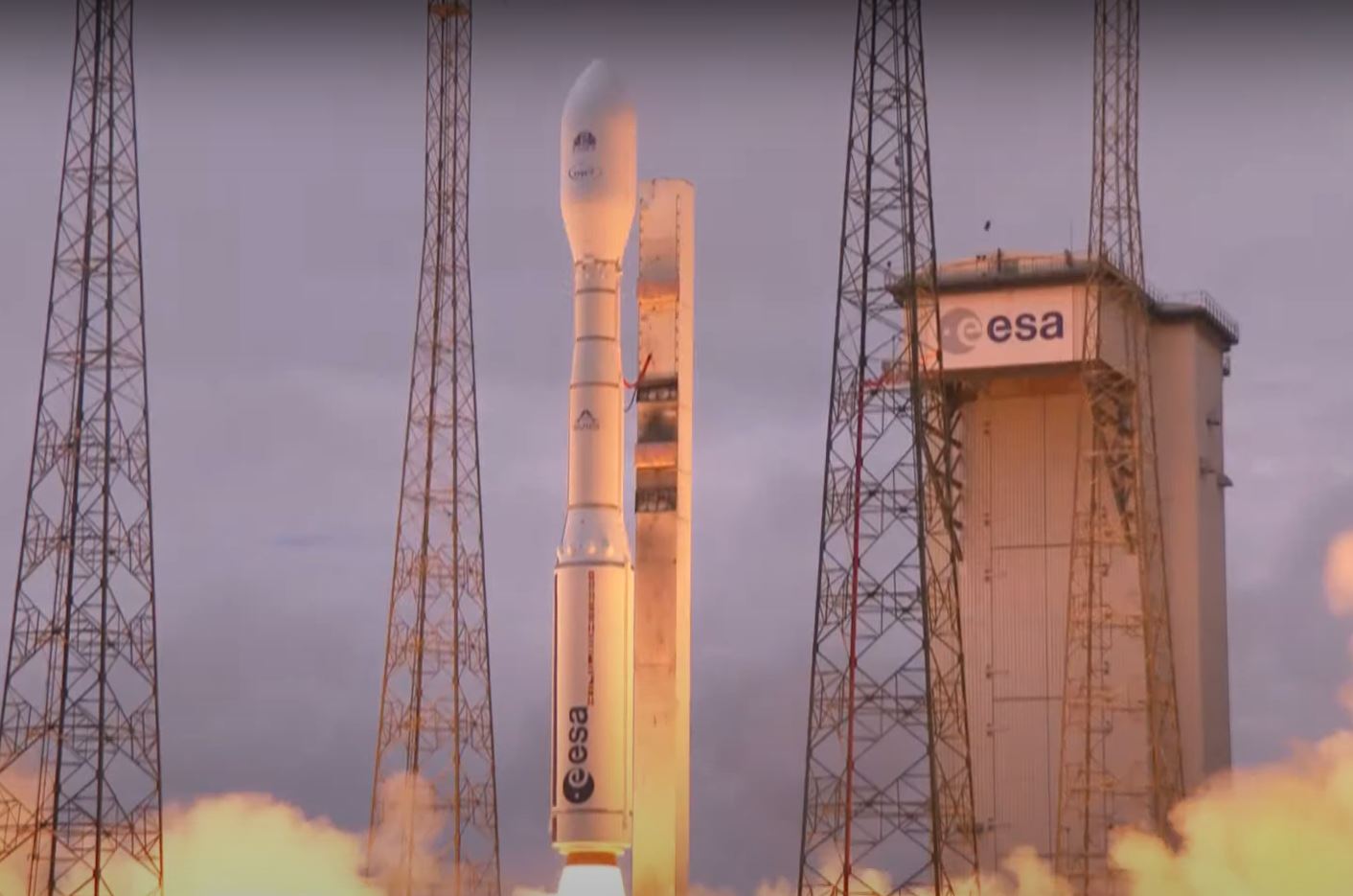After a short technical delay, the European Space Agency’s (ESA) new Vega-C rocket, operated by Arianespace, was successfully launched at 1313 GMT on 13 July from Guiana Space Centre, Kourou.
The primary payload, Lares 2, a laser reflectivity satellite to test Einstein’s theory of General Relativity, was later successfully deployed from the Vega-C’s Avum (fourth stage) into a circa 5,900 km medium Earth orbit (MEO) inclined at 70 degrees.
This will be followed by the deployment of six CubeSats, also to MEO:
• Alpha CubeSat, a small science research satellite examining the magnetosphere;
• AstroBio, an Italian science/technology demonstration satellite attempting to automate the detection of biological molecules in space.
• Celesta, MTCube-2 and Trisat-R, research CubeSats examining the effect of radiation on electronics; and
• Greencube, a research CubeSat examining plant growth in microgravity.
Vega-C is an upgraded version of the existing Vega launch vehicle. ESA has high hopes for its improved model, a radically modified derivative of the original Vega rocket which has had two of its four stages upgraded. Replacing Vega’s P80FW first stage, Vega-C’s new P-120C first stage is a close relative to the solid rocket booster used on the Ariane 6. Vega-C’s second stage uses the Zefiro-40 instead of Vega’s Zefiro-23. While there is no change to the Zefiro-9 third stage, or the AVUM upper stage, eventually the AVUM+ will replace the AVUM. It will use a European rocket engine instead of the currently supplied Ukrainian-built RD-869, which has supply chain difficulties due to the war with Russia.
With more powerful rocket motors, ESA has proclaimed that Vega-C will be able to reach multiple orbits at a similar cost to its predecessor – the typical price of a Vega launch is US$42 million, according to Seradata SpaceTrak. Vega-C can carry around 2,200 kg to a 700 km Sun-synchronous orbit – around 47 per cent increased capacity compared with Vega, which can carry 1,500 kg to the same altitude.

Vega-C is an upgraded version of its predecessor, Vega, which has flown since 2012. Courtesy: European Space Agency (ESA).
Comment by Farah Ghouri: This maiden flight is a good start. However, the original Vega also started off well but began to hit problems by its 15th launch attempt when a thermal failure of the second stage led to the rocket stages blowing apart prematurely and falling into the Atlantic Ocean. It lost the Falcon Eye 1 spacecraft costing insurers US$414.7 million. The 16th flight had a minor dispensing failure with two Lemur 2 satellites failing to be deployed (out of the 53 satellites carried). The 17th flight lost Seosat/Ingenio (optical), a Spanish imaging satellite, and Taranis, a scientific satellite, when the upper stage started tumbling because cables in the control system were fitted the wrong way around. However, after its bad spell Vega returned to reliability and has flown 21 flights since its maiden launch over a decade ago.
Derek Goddard and David Todd contributed to this story.





